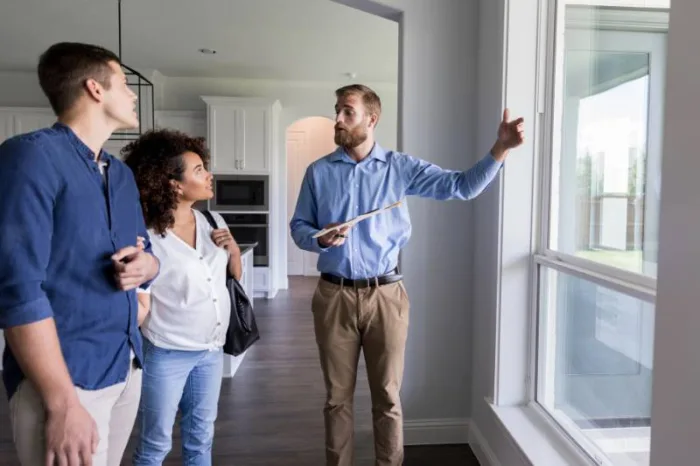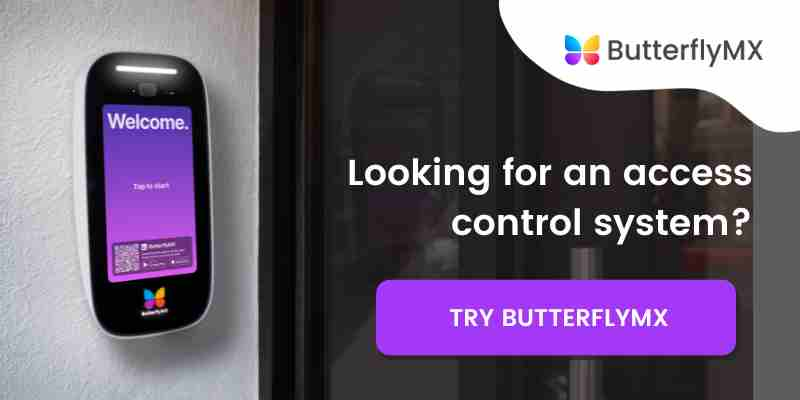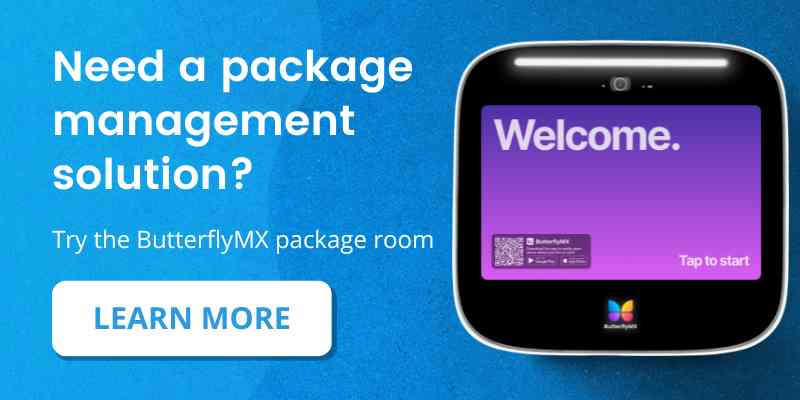Key takeaways
- A building operator or property manager is the person who oversees daily building operations and keeps the property running smoothly for renters.
- Some of the biggest problems that lead to a lackluster building operator experience are poor security, complicated access control, overwhelming package deliveries, unsatisfied residents, and inefficient maintenance processes.
- The five best investments to improve the building operator experience are building-wide access control, property management software, package management solutions, self-guided tours, and property maintenance software.
- The operator experience matters because happy employees lead to happy residents, which yields a higher NOI. Additionally, efficient processes retain employees longer and save both time and money.
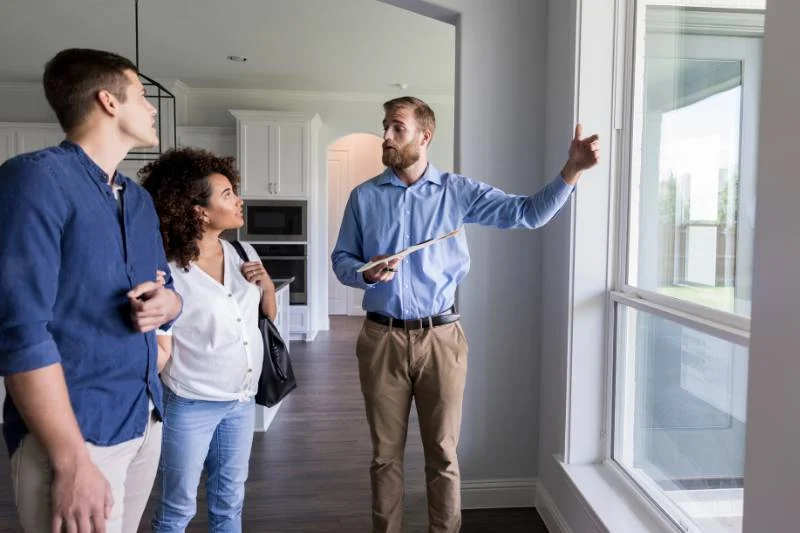
If you own, operate, or manage a multifamily building, you probably spend a lot of time trying to improve the resident experience. After all, happy residents lead to higher net operating income (NOI). But what about improving the building operator experience?
Just like residents, property managers and building operators deserve a positive experience at the building, too. So how do you improve that experience for property staff and management? Keep reading to learn about the biggest problems building operators face and the best ways to boost the operator experience.
Navigate this guide:
- What is a building operator?
- 5 ways to improve the building operator experience
- Why does building operator experience matter?
What is a building operator?
A building operator is a person who oversees the daily operations of a building and ensures its HVAC, mechanical, and electrical systems are all functioning properly. Building operators who oversee rental properties — like apartments and multi-tenant commercial buildings — also have to address tenants’ needs by handling tasks like rent collection, lease management, and conflict resolution.
Here’s a broad look at a building operator’s job:
- Maintain heating, cooling, plumbing, and electrical systems.
- Maximize building security with solutions like access control systems and security cameras.
- Oversee building maintenance projects like landscaping, painting, repairs, etc.
- Make sure the building remains up to code.
- Manage contracts with vendors for services such as waste removal, gas, water, and electrical.
- Oversee leases and attend to tenants if applicable.
At multi-tenant properties where people rent units to live or work, a building operator could be interchangeable with a property manager. At apartments, for example, property managers don’t own the building but are hired to oversee building operations and manage residents on behalf of the owner.
Most of the time, the building operator or property manager is responsible for both the physical structure of the building and the necessary administrative duties like screening prospective tenants, addressing tenants’ maintenance requests, and cultivating a positive tenant experience. Most of the time, a maintenance team and a leasing team report to the operator, who oversees both aspects of building management.
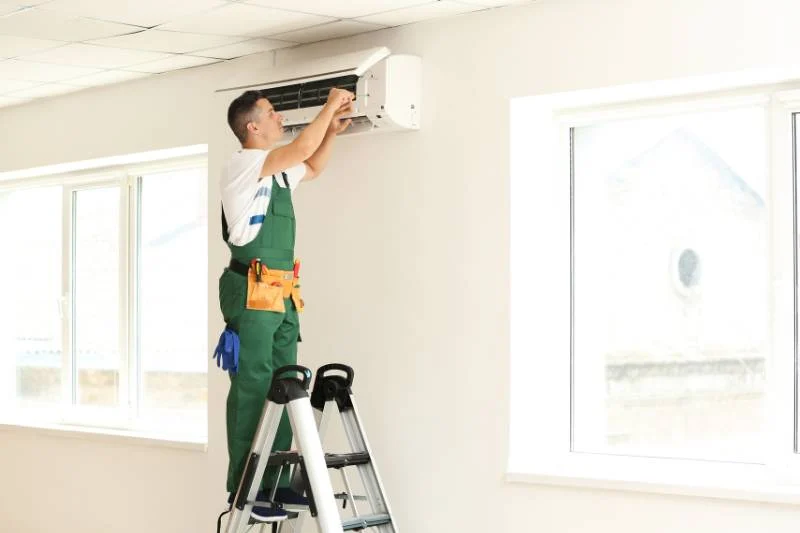
What does a building operator do?
A certified building operator’s job entails several responsibilities related to keeping a building running smoothly day in and day out.
Here are just some of the many responsibilities of a building operator:
What challenges do building operators face?
Managing a property — whether it’s a 300-unit high-rise or a 10-unit walk-up — requires ample time, effort, energy, and money. And while rewarding, operating a building comes with several challenges.
Some of the biggest challenges building operators face include:
- Maintaining security: Operators are responsible for protecting building assets and tenants alike.
- Managing property access: Building operators must control who can enter certain spaces without hindering access for authorized people.
- Managing deliveries: With online shopping and package deliveries on the rise, every building faces the challenge of managing all those deliveries. Building operators must manage access for couriers, accept and store packages, and distribute them to tenants.
- Routine maintenance: Successful property managers will have a comprehensive maintenance process in place — but that’s easier said than done. A thorough maintenance process involves accepting tenants’ maintenance requests, hiring and sending out workers to perform repairs, and following up with tenants after repairs are complete.
- Third shift coverage: Any building with on-site staff faces the challenge of providing adequate yet cost-effective coverage during the late-night third shift to manage visitors and maintain security.
- Resident complaints: It can be extremely time-consuming to address and resolve complaints from tenants.
5 ways to improve the building operator experience
As a building owner, operator, or manager, you’re always looking for ways to streamline your job. With the right tools and techniques, you can save time and lighten your day-to-day workload.
Here are the top five ways to improve the building operator experience:
- Implement building-wide access control
- Add a package management solution
- Offer self-guided tours
- Invest in the right property management software
- Use property maintenance software
1. Implement building-wide access control
A building-wide access control system is a unified solution that streamlines access into and throughout the property.
In other words, it controls access at every entryway, from the front door or gate to amenity spaces, elevators, parking garages, and apartment units. As a result, property staff can manage everything from one platform. And residents can navigate the building using just one mobile app on their smartphones.
The best building-wide access control system consists of:
- A video intercom for front entrances. Installed at your property’s front door or gate, a video intercom allows visitors to request access via a video call. So, residents can see who’s there before letting them in. Delivery carriers can also use the intercom to gain access.
- Keypads or card readers for shared interior spaces: Control access at auxiliary entrances, amenity spaces, and staff offices with keypads or card readers.
- Elevator access controls: Keep your elevator doors locked for security without hindering access for authorized people by installing an elevator access control solution. That way, visitors can only access the floor of the tenant they’re visiting.
- Vehicle access solution: Install a vehicle access control system at your gated entrance or parking garage. We recommend a windshield tag reading system, which scans a sticker on each tenant’s windshield to grant access.
- Smart locks on unit doors: Complete the unified property access experience with smart locks on apartment unit doors. That way, residents can navigate the entire building and gain unit access from one mobile app.
- Front desk station software: View live video feeds of all intercoms, chat directly with guests and tenants when necessary, and share live video with residents to improve security with a robust front desk station — a modern alternative to a doorman.
Benefits of a unified building access control system
- Eliminate physical keys, which prevents lockouts and saves you time and money spent copying keys and changing locks.
- Staff can manage more than one property since they won’t have to be onsite to update access permissions, let in visitors, or lead tours.
- Improve the employee experience and reduce turnover by automating property access and removing access-related tasks from staff’s workload.
- Manage visitors during the third shift when traffic slows down. With a video intercom at the front entrance, guests can request access directly from residents instead of staff members. As a result, any staff during these hours can focus on more important duties.
- Improve the resident experience by making property access more convenient and secure.
- Boost NOI by achieving all of the above.
2. Add a package management solution
Online shopping and food delivery services are a normal part of life, and they’re not going away anytime soon. For you, that means dozens of packages and meals being delivered to your building every day.
To combat this delivery dilemma, you need a comprehensive package management solution.
Your options for package management include:
- Package room. A designated room with controlled access where delivery carriers can securely drop off packages for residents to pick up at any time.
- Package lockers. Storage systems installed in common areas that have multiple compartments, allowing couriers to deliver packages by placing each parcel in a separate compartment.
- Off-site package storage program. Residents have packages delivered to a third-party facility and choose a drop-off time that works for them. The third party then delivers the package to the resident’s door at the scheduled time. Fetch is a popular off-site delivery services.
- Package management software. Package management software doesn’t assist with storing parcels, but it simplifies the package intake and distribution process. Usually, the software is an app that property staff uses to scan packages, send delivery notifications to residents, and mark deliveries as complete.
What’s the best delivery management solution?
The best delivery management solution to improve the building operator experience is a package room because it creates an entirely hands-off experience for staff.
By implementing a package room, operators and managers no longer waste time:
- Granting property access to delivery carriers
- Accepting, organizing, and storing packages
- Alerting residents that they’ve received packages
- Distributing packages to residents when they arrive to pick them up
3. Offer self-guided tours
Filling vacancies quickly is a top priority for any building operator. And perhaps the easiest way to sign leases faster is to offer self-guided apartment tours.
Here’s how offering self-guided tours can improve the operator experience:
- Save time for building staff: Without self-guided tours, leasing agents would have to take time out of their busy days to greet prospects, show them around the building, and answer questions. That’s hours a day spent giving tours, leaving leasing staff feeling overwhelmed and unable to tend to other duties.
- Increase efficiency and offer more tours per day: There are only so many hours in a day — and leasing staff isn’t available to lead tours outside of business hours. By offering self-guided tours, you’ll increase the number of prospects who tour your building per day without adding to your staff’s workload.
- Reduce administrative work: Leading tours isn’t the only time-consuming task. Scheduling those tours sometimes requires even more time and effort. Self-guided touring eliminates the tedious back-and-forth of coordinating schedules between leasing agents and prospects.
Overall, these benefits ultimately improve the building operator experience by replacing manual work with automation — and filling vacancies faster leads to higher NOI and a better operator experience.
Pro tip: Make sure you automate property access for prospects when offering self-guided tours. Otherwise, you’ll need to have a staff member onsite to let them into the building. Instead, invest in a building-wide access control system that allows staff to grant access remotely or give prospects temporary access codes.
Watch how ButterflyMX enables self-guided tours at apartments:
4. Invest in the right property management software
The key to improving the building operator experience is to automate various processes to save time, cut costs, and reduce manual work. And one of the best automation tools is robust multifamily property management software (PMS).
With the right property management software, you can:
- Streamline the leasing process. Simplify tasks like tracking marketing campaigns, organizing leads, managing communication with prospects, and facilitating lease renewals.
- Manage accounting and budget. The software can streamline rent collection, simplify bill entry, and provide real-time financial reporting.
- Organize your portfolio. If you manage multiple buildings, you can easily organize data for all your buildings within your PMS.
Overall, by automating these various property management tasks, you’ll dramatically improve the building operator experience and allocate more time to cultivating an amazing resident experience.
Pro tip: Choose property management software that integrates with other technologies your building uses. For example, many PMS solutions integrate with access control systems so that your tenant data syncs from the software to the access system.
5. Use property maintenance software
Property management software is designed to automate a wide range of tasks, from leasing to marketing to accounting.
But property maintenance software is specifically designed to streamline the vital process of addressing and completing residents’ maintenance requests.
A strong maintenance team makes all the difference in maximizing NOI and delivering an exceptional resident experience. And your team is only as good as its processes. As a result, building operators need robust property maintenance software to ensure a seamless maintenance request process.
The best maintenance software automates every step of this process, from automatically assigning the initial request to a technician to sending automatic follow-up emails to residents after work is completed.
So how does property maintenance software benefit building operators and property managers?
Not only does it save time, but it also:
- Resolves problems faster. Not only does this make residents happy, but it ensures that necessary maintenance is resolved faster to prevent larger and more expensive problems.
- Eliminates manual administrative work. No longer will you have to coordinate schedules between residents and maintenance workers. You also won’t have to be the middleman managing communication between residents and your maintenance team. The software automates all communication and scheduling.
- Provides automatic follow-up. With the right software, you won’t have to set reminders to follow up with residents after work is complete. Instead, the software can send emails for you, which makes residents feel you care.
Why does building operator experience matter?
Improving the resident experience may be key to retaining residents, reducing vacancy rates, and maximizing NOI.
But the building operator experience is just as important.
A poor building operator experience results in:
- Unmotivated employees. Property staff who only perform tedious, monotonous tasks are more likely to experience burnout and feel unsatisfied in their roles.
- High staff turnover. Unhappy staff members are more likely to quit. And it costs less to retain property staff long-term than to replace employees and train new ones.
- Unhappy residents. When property staff is overworked and unhappy in their roles, residents notice. A bad mood, poor attitude, or overwhelmed demeanor can easily rub off on residents.
- Wasted time — and money. Time is money. When building operators waste time on tasks that could be automated, other work isn’t getting done. That also means you’re paying people to complete tasks that could be automated instead of performing the important, personal work that computers can’t handle — like interacting with residents and cultivating an exceptional resident experience.
Without the right tools, techniques, and technologies to improve the building operator experience, property management will struggle to work efficiently. As a result, staff may quit, or their performance may decline, which ultimately hurts the building’s NOI.

Get your free quote!
Fill in the form below, and we'll email you right back.
Want a free quote?
Fill in the form below, and we'll email you right back.
You’ll be redirected shortly...
